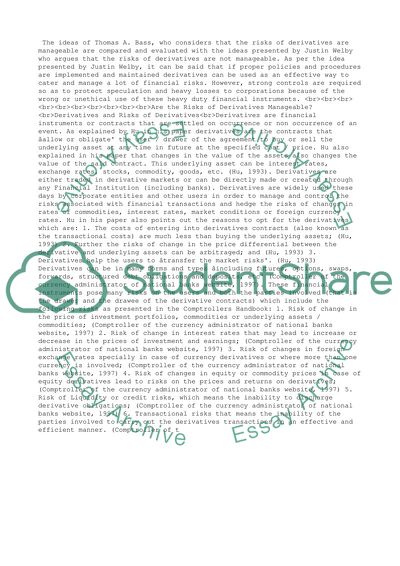Cite this document
(“Are the Risks of Derivatives Manageable Essay Example | Topics and Well Written Essays - 1250 words”, n.d.)
Retrieved from https://studentshare.org/business/1465863-are-the-risks-of-derivatives-manageable
Retrieved from https://studentshare.org/business/1465863-are-the-risks-of-derivatives-manageable
(Are the Risks of Derivatives Manageable Essay Example | Topics and Well Written Essays - 1250 Words)
https://studentshare.org/business/1465863-are-the-risks-of-derivatives-manageable.
https://studentshare.org/business/1465863-are-the-risks-of-derivatives-manageable.
“Are the Risks of Derivatives Manageable Essay Example | Topics and Well Written Essays - 1250 Words”, n.d. https://studentshare.org/business/1465863-are-the-risks-of-derivatives-manageable.


